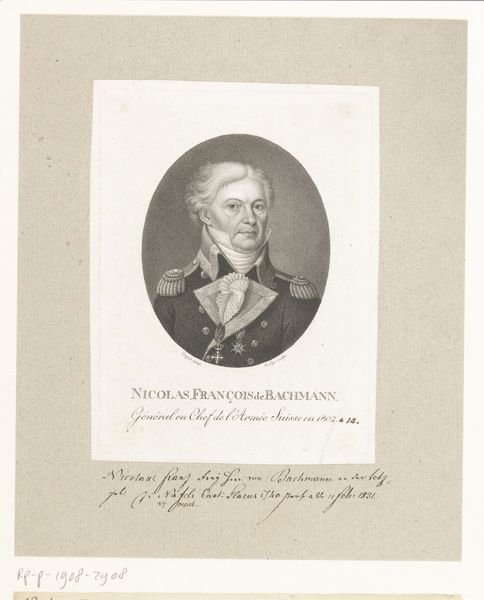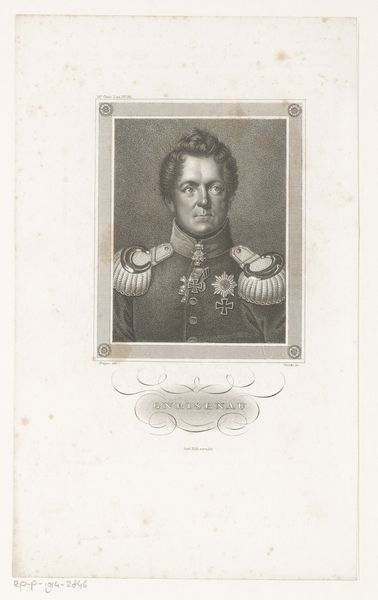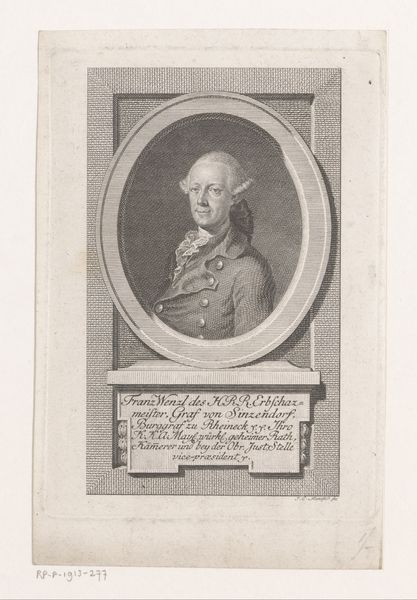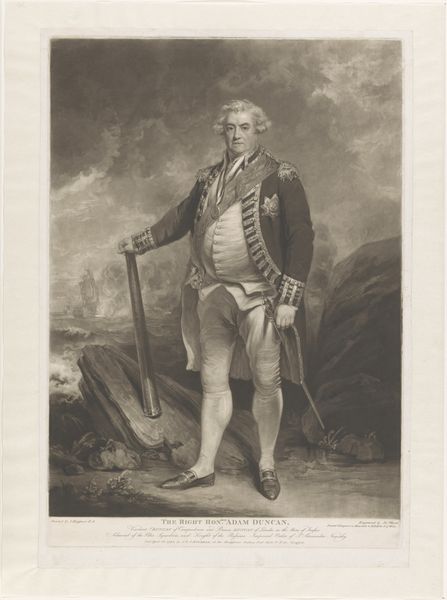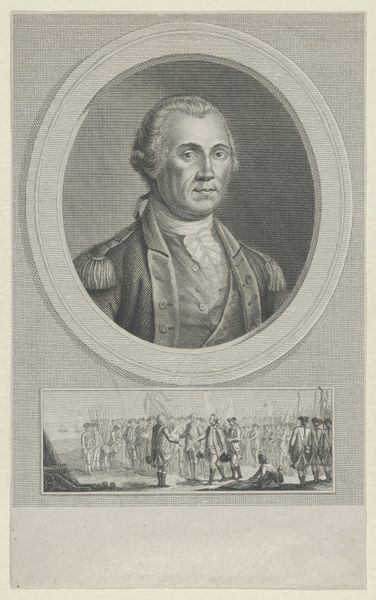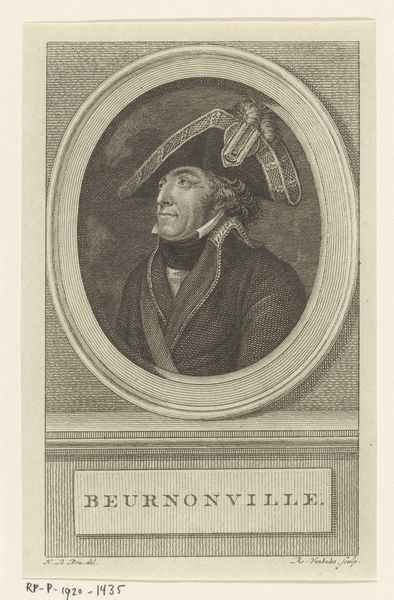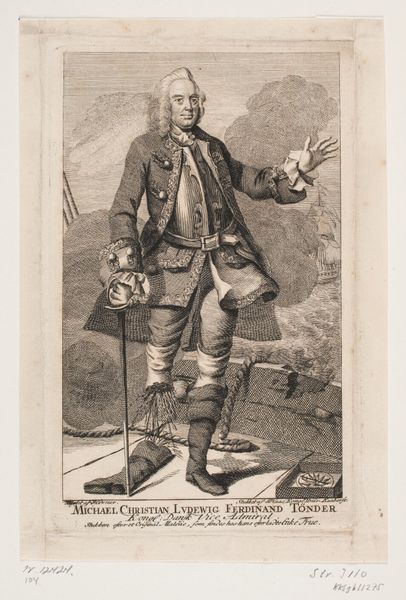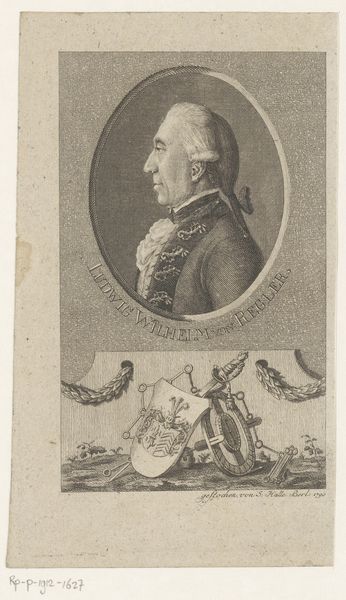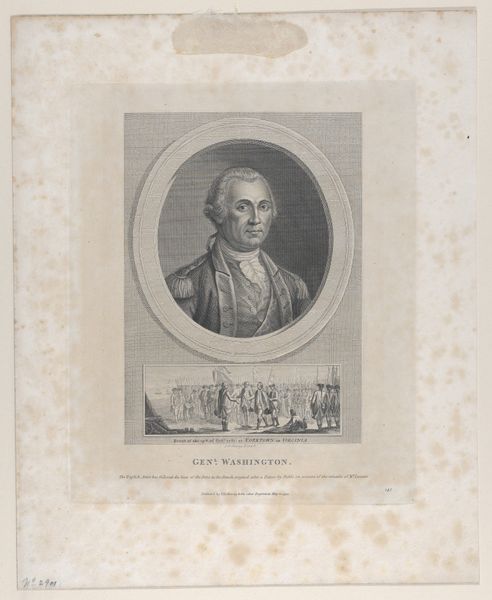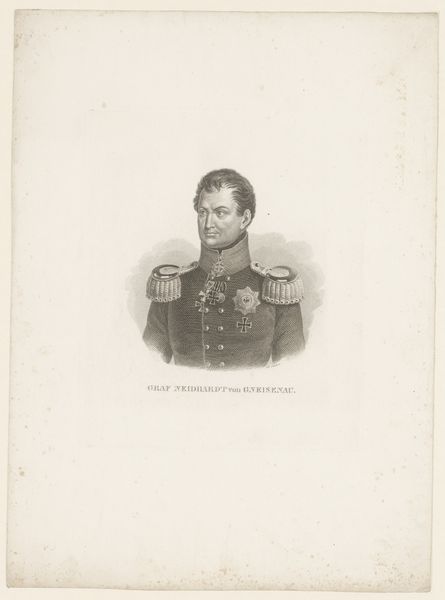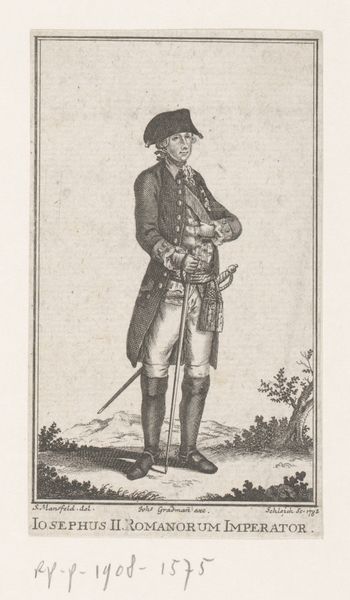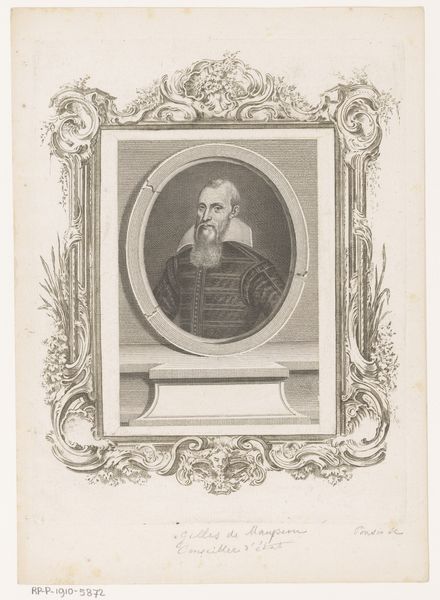
Portræt af kommandør-kaptajn C. W. Jessen. Herunder: Orlogsskibet Prins Christian Frederik i kamp 1808 1715 - 1815
0:00
0:00
Dimensions: 290 mm (height) x 178 mm (width) (plademaal)
Curator: This is a print from between 1715 and 1815, titled “Portræt af kommandør-kaptajn C. W. Jessen. Herunder: Orlogsskibet Prins Christian Frederik i kamp 1808.” The artwork currently resides in the Statens Museum for Kunst, SMK. Editor: The stark monochrome aesthetic gives it a very serious and perhaps a touch austere character, almost like a document. Curator: It's an engraving, so that serious tone is understandable. The print medium itself democratized image distribution; who was this Captain Jessen in the social and political landscape of the time? Editor: Well, the materials used speak to production, but I find my eyes drawn down to the battle scene at the bottom half. We see sailing warships engaged in naval combat. Considering Jessen’s rank and the ship’s namesake, these ships, those cannon, this conflict all become integral. Curator: Absolutely. It prompts questions about maritime power, military campaigns, and perhaps even national identity. Did Jessen’s lineage, for instance, tie into Denmark’s colonial projects? How do notions of class factor into naval officer portraiture during this period? Editor: From a purely materialist standpoint, how accessible were these images? To what degree did their function serve political power? Also, did ordinary citizens have access to engravings such as this to commemorate Captain Jessen? Curator: Access, class, power—these are indeed important vectors here. If we understand Jessen and the Christian Frederik within a larger narrative of gender and empire, for instance, how might we interpret the visual coding of masculinity within the portrait alongside this naval engagement? Editor: Interesting. Focusing on craft, on the engraving, reminds me that hands had to translate concept to object through specific materials available to them, yet in the broader framework, it gives the object context and consequence that it might otherwise not have. Curator: Exactly. Engaging the artwork on multiple levels allows for it to speak to diverse audiences. Editor: A single, rather small engraving really packs a lot of insight into 18th century social mores.
Comments
No comments
Be the first to comment and join the conversation on the ultimate creative platform.
